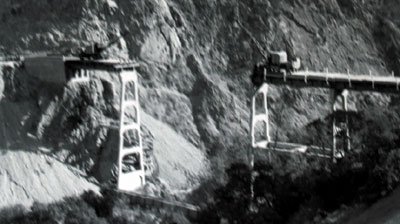Water is life. It’s also energy. Recently, I chatted about the
water-energy connection with State Assemblyman John Laird, who
represents the communities of Coyote Valley, Morgan Hill and San
Martin in the South Valley along with the Monterey Bay and Big Sur
regions.
Water is life. It’s also energy. Recently, I chatted about the water-energy connection with State Assemblyman John Laird, who represents the communities of Coyote Valley, Morgan Hill and San Martin in the South Valley along with the Monterey Bay and Big Sur regions. Laird happens to be one of California’s most knowledgeable experts on the state’s water politics, having made management of our most crucial liquid resource a major part of his public
service career over the last 30 plus years.
“One of the biggest uses of energy in California is the extraction, cleaning, pumping and management of waste water,” he said. “Those processes of water are probably the largest single use of electricity in California. Every time you save a gallon of water, you’re actually saving an equivalent of electricity and power.”
The water-energy connection is a big issue in the Golden State. About 20 percent of our total energy use goes to the processing and pumping of water. That’s a big deal because it means managing our water resources efficiently also helps us cut down on our fossil fuel consumption. And everyone can understand that the need to cut down considerably on fossil fuels is growing increasingly important as we face climate change problems as well as the peaking of the world’s “easy oil” supplies.
Water is definitely life energy for California. Without it, our state could never have grown to 36 million people, or more than one-tenth the population
of the the United States. It also provides California with life energy in another way – economic life energy. Our state is now a global financial powerhouse because people in the California’s past realized the importance of water for economic survival and took steps to ensure we would have an abundant supply of the stuff. If it hadn’t been for leaders who created the dams and
reservoirs and network of canals that now manage our water resources, there’s no way we could have become the sixth largest economy in the world.
Silicon Valley and the entire South Valley itself would never have been able to achieve any significant degree of economic success without the water of life. Luckily, back in the 20th century, local leaders decided to manage the water here for the benefit of the growing population. They built several reservoirs to store the water throughout the year.
The biggest storage lake in our region by far is Anderson Reservoir on the eastern boundary of Morgan Hill. It is capable of storing more water than all the other reservoirs in Santa Clara County combined. Without it, Silicon Valley would never have become the world’s high-tech center. Anderson’s water made a crucial difference in our region being able to sustain the population and the electronics industry that has makes us famous.
Laird pointed out to me that California’s population is projected to rise by another 10 million people in the next quarter century. During the same period of time, California is expected to start seeing some severe climate changes due to global warming. The Sierra snowpack – which supplies billions of gallons of water to about 65 percent of the state’s population as it melts throughout the year – will be especially hard it over the next 100 years, Laird said. Analysts told a select committee he served on that the Sierra snowpack could be only 90 percent of what it is now in the next 30 years, and about half of what it is now by the end of the century. That doesn’t bode well for South Valley’s future because much of our water supply comes from mountain melt that eventually winds up here.
What’s more, as the state faces increasing drought potential with climate changes, its booming population will require more energy to manage and distribute a decreasing amount of water. We need to become water wise to avoid some serious energy problems in the coming decades.
Luckily, there are ways we can be smarter about water. One is to eliminate wasting this precious resource by educating people to use water more efficiently. We can use the most important power source we have – brain power – to change our social attitudes about water and the energy needed to manage it. “People don’t realize that the city of Los Angeles has grown by 1 million people in the last 25 years on exactly the same amount of water,” Laird said. This water efficiency directly correlates with energy efficiency, he added.
So if you want to ensure South Valley’s economic survival, find ways in your daily life to cut down on your water use. You’ll not only save energy, you’ll save California’s future.











